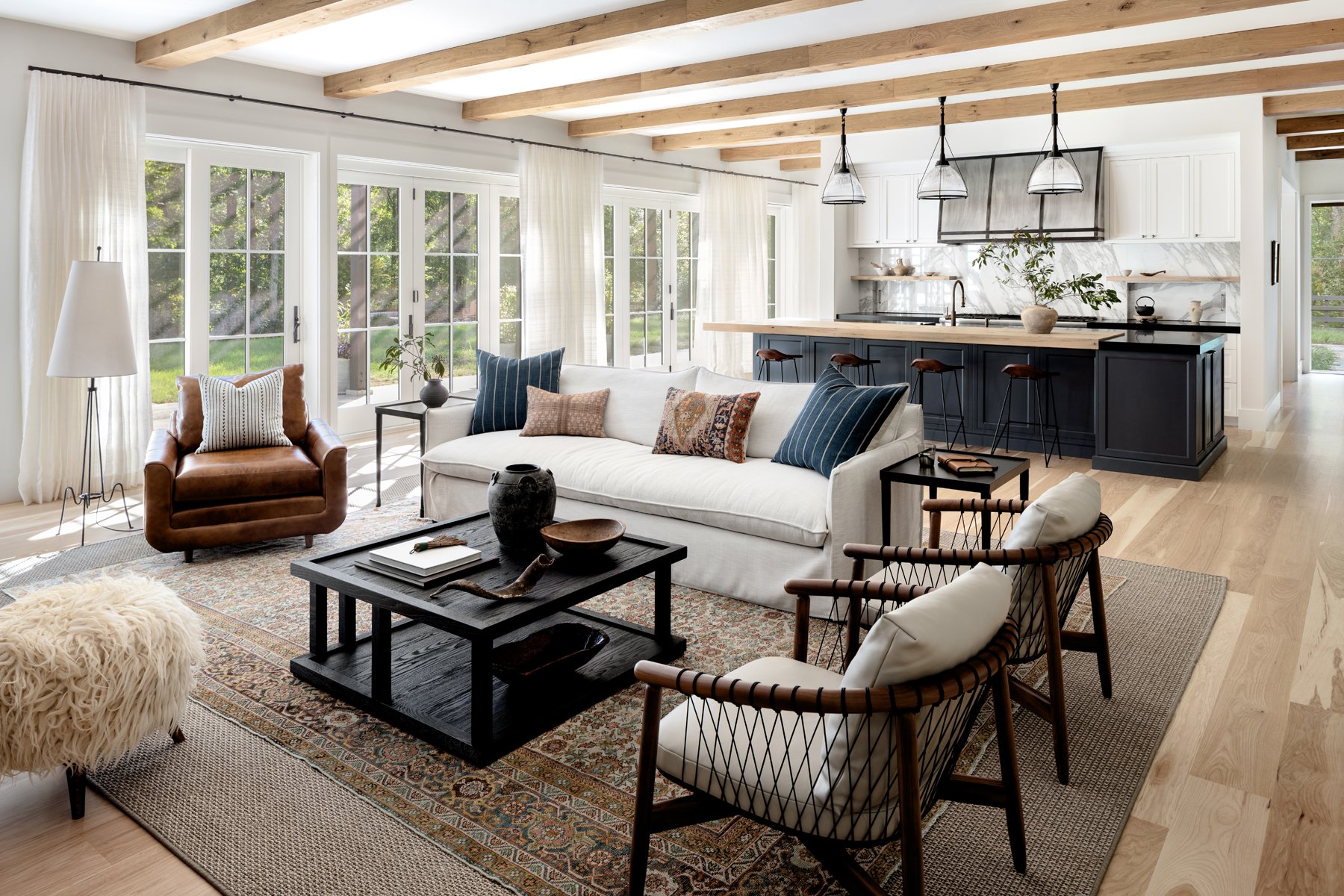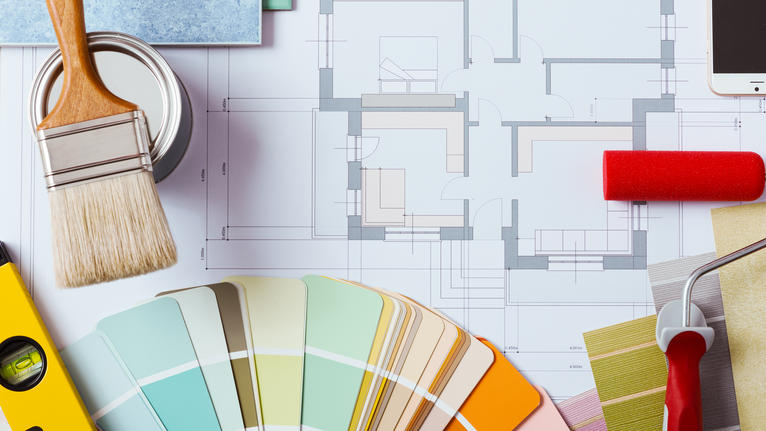What Are the current Patterns in Interior Style That Can Raise Your Home?
In the ever-evolving world of interior decoration, a merging of sustainability, capability, and personalization is shaping modern spaces. Property owners are progressively inclining green materials and biophilic components that not just enhance visual appeals however additionally advertise health. Meanwhile, the tension in between maximalism and minimalism enables diverse expressions of design, catering to individual choices. As the need for multi-functional areas climbs, ingenious options arise to address contemporary living challenges. Checking out these patterns reveals exactly how they can change your home right into a representation of both individual preference and practical needs, inviting a closer assessment of what truly raises a home.
Sustainable Layout Practices
Sustainable style techniques have become a keystone of contemporary indoor layout, reflecting an expanding recognition of ecological impact. These techniques prioritize the use of green materials, energy-efficient systems, and waste decrease methods, aiming to develop interiors that are not just cosmetically pleasing however also environmentally liable.
One trick facet of sustainable style is the choice of materials. Designers increasingly favor reclaimed wood, recycled steels, and low-VOC (unstable natural substances) paints, which lessen damaging emissions and advertise healthier interior air top quality. The consolidation of all-natural light through calculated home window positionings reduces reliance on man-made lights, therefore conserving power.
Another crucial aspect is the implementation of effective home heating, air conditioning, and water systems. Using wise modern technology can enhance energy usage, while rain harvesting systems add to lasting water management. In addition, furniture and style are frequently sourced from regional craftsmens, additionally reducing the carbon footprint related to transport.
Eventually, lasting design techniques not only improve the capability and long life of areas but likewise foster a much deeper link to the environment (Interior design studio Miami). As customers come to be progressively conscientious, these techniques will likely remain to shape the future of indoor design, creating areas that reverberate with both beauty and sustainability
Vibrant Color Combinations
Bold color combinations have ended up being a specifying fad in interior decoration, allowing rooms to make striking statements and reflect personal style. Using vivid colors can change an or else normal room into an exciting setting. Developers are increasingly accepting abundant jewel tones, saturated primaries, and unexpected shade mixes to develop a sense of dramatization and vibrancy.
Incorporating bold shades can be attained with different components, consisting of walls, furnishings, and accessories. For example, an accent wall repainted in a deep emerald environment-friendly or a striking cobalt blue can act as a prime focus, while colorful furniture or artwork can infuse energy into the space. Layering various shades within the exact same shade family adds depth and interest, enhancing the overall aesthetic.

Additionally, making use of contrasting colors can stimulate an area, attracting interest to architectural functions and layout elements. This approach urges homeowners to express their originality and accept imagination in their interior spaces. As patterns evolve, bold color palettes stand apart as an effective ways of individual expression, making it possible for property owners to curate environments that reverberate with their distinct preferences and way of livings.
Maximalism Vs. Minimalism
Exactly how do personal preferences affect the continuous discussion in between maximalism and minimalism in indoor design? Minimalism, characterized by clean lines, neutral schemes, and practical furnishings, charms to those seeking simplicity and serenity.
Alternatively, maximalism embraces spirit with vibrant colors, diverse patterns, and an abundance of decoration. This design encourages individual storytelling, allowing house owners to showcase their unique collections and interests. Maximalism invites creative thinking and self-expression, making it an eye-catching option for those who grow on visual stimulation and variety in their surroundings.
The dispute between maximalism and minimalism inevitably pivots on individual taste and lifestyle. While minimalism may resonate with those who prefer a peaceful, orderly area, maximalism attract individuals that commemorate individuality and splendor in design. Comprehending one's preferences can direct house owners in producing rooms that show their identities while aligning with modern fads in interior decoration.
Multi-Functional Areas

The design of these spaces often integrates innovative furniture options, such as couch beds, extendable dining tables, and modular shelving, which can adjust to different functions throughout the day. A living room can flawlessly transition into a home office or a visitor room, maximizing energy without sacrificing style.
Additionally, the combination of technology plays an essential duty in improving multi-functionality. Smart home devices can simplify procedures, permitting house owners to control lights, temperature, and also safety and security effortlessly, therefore creating an extra adaptable living atmosphere.
Along with practicality, the visual allure of multi-functional areas can be achieved via thoughtful style choices. Open layout, natural color combinations, and strategic zoning with rugs or furnishings can mark locations while making certain a harmonious flow. Eventually, welcoming multi-functional areas not just optimizes living areas however likewise enriches the overall Learn More home experience.
Biophilic Style Elements
An enhancing number of interior designers are including biophilic style aspects to promote a deeper connection in between indoor spaces and the all-natural atmosphere. This style ideology our website stresses the combination of nature into the developed environment, promoting well-being and improving the visual charm of an area.
Key biophilic style elements include the use of natural materials, such as bamboo, timber, and stone, which produce a warm and welcoming environment. Incorporating plant, via vertical yards or indoor plants, not just improves air high quality however likewise adds a revitalizing aesthetic aspect. Natural light is an additional important aspect; maximizing home windows or utilizing skylights can maximize daytime, lowering dependence on artificial lighting.
Water features, such as aquariums or fountains, evoke harmony and can serve as centerpieces within an area. Color combinations influenced by nature-- earthy tones and shades of blue and eco-friendly-- cultivate a soothing ambiance.
Integrating these biophilic elements not just improves the aesthetic worth of a home but additionally adds to improved mental health and health, making them a vital consideration for contemporary indoor design.

Final Thought
The most recent fads in indoor design underscore the value of sustainability, personalization, and performance. Highlighting environmentally friendly materials and biophilic components promotes health while vibrant shade combinations and maximalism enhance private expression. The ongoing dialogue in between maximalism and minimalism shows varied visual choices, and the surge of multi-functional areas addresses modern living difficulties. Collectively, these trends not only boost domestic settings but also add to a more personalized and sustainable strategy to interior decoration.
In the ever-evolving world of interior style, a convergence of personalization, performance, and sustainability is shaping contemporary areas.Strong color combinations have actually come to be a specifying trend in indoor design, enabling rooms to make striking declarations and show click now personal design. While minimalism may resonate with those that like a calm, organized room, maximalism appeals to individuals who commemorate uniqueness and richness in style. Recognizing one's choices can direct homeowners in developing spaces that reflect their identities while straightening with modern fads in interior layout.
In addition to usefulness, the visual appeal of multi-functional spaces can be attained through thoughtful style selections.